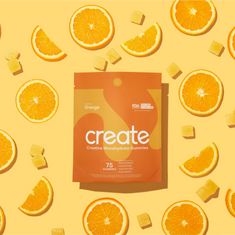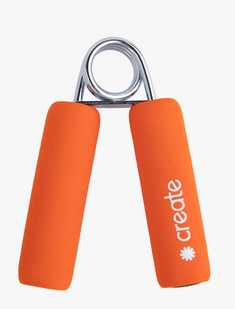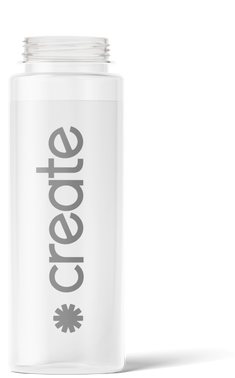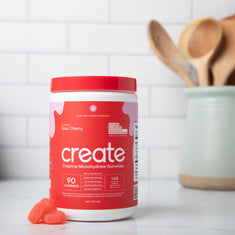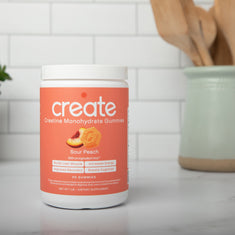Creatine Gluconate Vs Monohydrate - What Is The Difference?
Creatine Gluconate vs. Monohydrate
In the world of fitness and performance enhancement, there's an ongoing debate that has captured the attention of athletes, bodybuilders, and fitness enthusiasts alike. It's a showdown between creatine gluconate and creatine monohydrate, two prominent forms of creatine supplementation. The question of which one reigns supreme has sparked intense discussions and fueled curiosity. In this analysis, we will delve into the similarities, differences, and effectiveness of these two contenders, aiming to settle the debate once and for all. Additionally, if you're seeking a reliable and convenient option, we have an exciting recommendation: Create monohydrate gummies. Discover the advantages we offer and make an informed choice for your creatine supplementation journey by taking our quiz today!
Difference Between Creatine Gluconate And Monohydrate
Creatine gluconate and creatine monohydrate are two popular forms of creatine supplements that offer similar benefits but differ in composition, bioavailability, and potential effects. Some major differences between both include:
Composition
Creatine gluconate is a molecule formed by combining creatine and gluconic acid. The addition of gluconic acid, which is a byproduct of glucose, is thought to improve creatine's solubility and bioavailability. This tweak may facilitate more rapid creatine absorption and usage, which could improve sports performance and speed up muscle repair.
Creatine monohydrate is one of the simplest and most common forms of creatine. A single water molecule and one creatine molecule make up this. It's the creatine supplement that's been studied the most, and the results back up its claims of improving athletic performance, boosting muscle strength, and stimulating muscle growth.
Bioavailability And Absorption
Creatine gluconate has gluconic acid added to it, which is supposed to make it more soluble in water. As a result of this improved solubility, creatine may be absorbed and used more effectively by the body. While these characteristics are desirable in theory, studies comparing the bioavailability and absorption of creatine gluconate and creatine monohydrate are lacking.
Creatine monohydrate has been demonstrated in numerous studies to have high bioavailability. According to a study published in the Journal of Nutrients the bioavailability of monohydrate is as high as 100%, some of it is absorbed by the tissues of the body while the remaining is gone in urine. This means that the body can absorb and make use of a sizable amount of the creatine monohydrate that is consumed. Consuming it with carbohydrates or protein increases the rate at which it is absorbed.
Effects On Athletic Performance And Muscle Growth
Athletic performance is something that is boosted by both supplement types, however, due to the high absorption power of monohydrate, it gives faster results. Creatine gluconate can still boost athletic performance and encourages muscular building, however. Some advantages are increased strength and power output during high-intensity training, enhanced muscle endurance, and perhaps quicker recovery.
The supplement creatine monohydrate has been studied extensively and found to boost muscle creatine levels, enhance exercise performance, and stimulate muscular growth. This specifically also shows mood enhancement and cognitive functioning improvement. High-intensity and power athletes, in particular, benefit greatly from taking this supplement.
Potential Side Effects
Creatine gluconate has the same mild potential adverse effects as other types of creatine, such as stomach pain, bloating, and diarrhea. If you take more than the prescribed amount, you increase your risk of these side effects.
Extensive research demonstrates that creatine monohydrate is not only safe but also widely regarded by the majority of users. Some people may have gastrointestinal distress, such as bloating, diarrhea, or cramps; however, it is typically possible to manage this side effect by adjusting the dosage or the time of day when the medicine is taken. Monohydrate is the safest supplementation up until now, according to studies.
Considerations
There are more factors to think about before deciding:
Availability And Cost
Creatine monohydrate is one of the most accessible forms of creatine, and it is typically more affordable than other types of creatine, such as creatine gluconate. It's possible that creatine gluconate is harder to come by and more expensive, both of which may be factors that some people take into consideration.
Personal Preference
The choice between creatine gluconate and creatine monohydrate often comes down to individual preference. Creatine gluconate has the potential for quicker absorption. However, some people may prefer the long history and low cost of creatine monohydrate. Try out a few to find the ones that suit your needs, goals, and wallet the best.
Suggestions For Cycling The Types Of Creatine For Optimal Results
If you want to get the most out of your creatine supplementation, consider cycling between different types of creatine. This involves alternating from one form to another periodically to maintain optimal benefits without compromising safety or efficacy. Some suggestions for cycling between creatine gluconate and creatine monohydrate are as follows,
Phase-Based Cycling
Start With Creatine Monohydrate (Phase 1)
Begin your supplementation regimen with creatine monohydrate. This form of creatine has been extensively researched and shown to effectively increase muscle creatine stores, enhance strength, and improve performance. Follow the recommended dosage and timing guidelines for this phase, which typically involves a loading phase followed by a maintenance phase.
Switch To Creatine Gluconate (Phase 2)
After utilizing creatine monohydrate for four to eight weeks, switch to using creatine gluconate for the following four to eight weeks. It is believed that creatine gluconate has a higher solubility, which could result in improved absorption and utilization. The same guidelines for dosage and administration timing apply as they do for creatine monohydrate.
Repeat The Cycle (Phase 3)
After you are finished with the phase in which you take creatine gluconate, you should switch back to taking creatine monohydrate and continue cycling between the two forms every 4-8 weeks. This cycling strategy can help maintain the efficiency of creatine supplementation and may prevent your body from becoming too acclimated to one form of creatine. Cycling is a method that involves alternating between two different forms of the supplement.
Time-Based Cycling
Cycle By Training Periods
You can also cycle different types of creatine by timing them so that they coincide with different phases or periods of your exercise. For instance, you may take creatine monohydrate when you're doing intense strength training and then switch to creatine gluconate when you're doing less intense training or when you're recovering from your workout. With this strategy, you will be able to maximize the individual benefits that come from each form of creatine in accordance with the requirements of your workout.
Follow A 3:1 Ratio
Use creatine monohydrate for three consecutive months, followed by one month of creatine gluconate supplementation. This 3:1 ratio allows your body to reap the benefits of both forms of creatine while adding variety to your supplementation regimen. As always, remember to follow the recommended dosage guidelines for each form of creatine.
Remember that individual responses to creatine supplementation can vary, and these cycling suggestions may not be ideal for everyone. Always consult with a healthcare professional before starting any new supplementation regimen.

